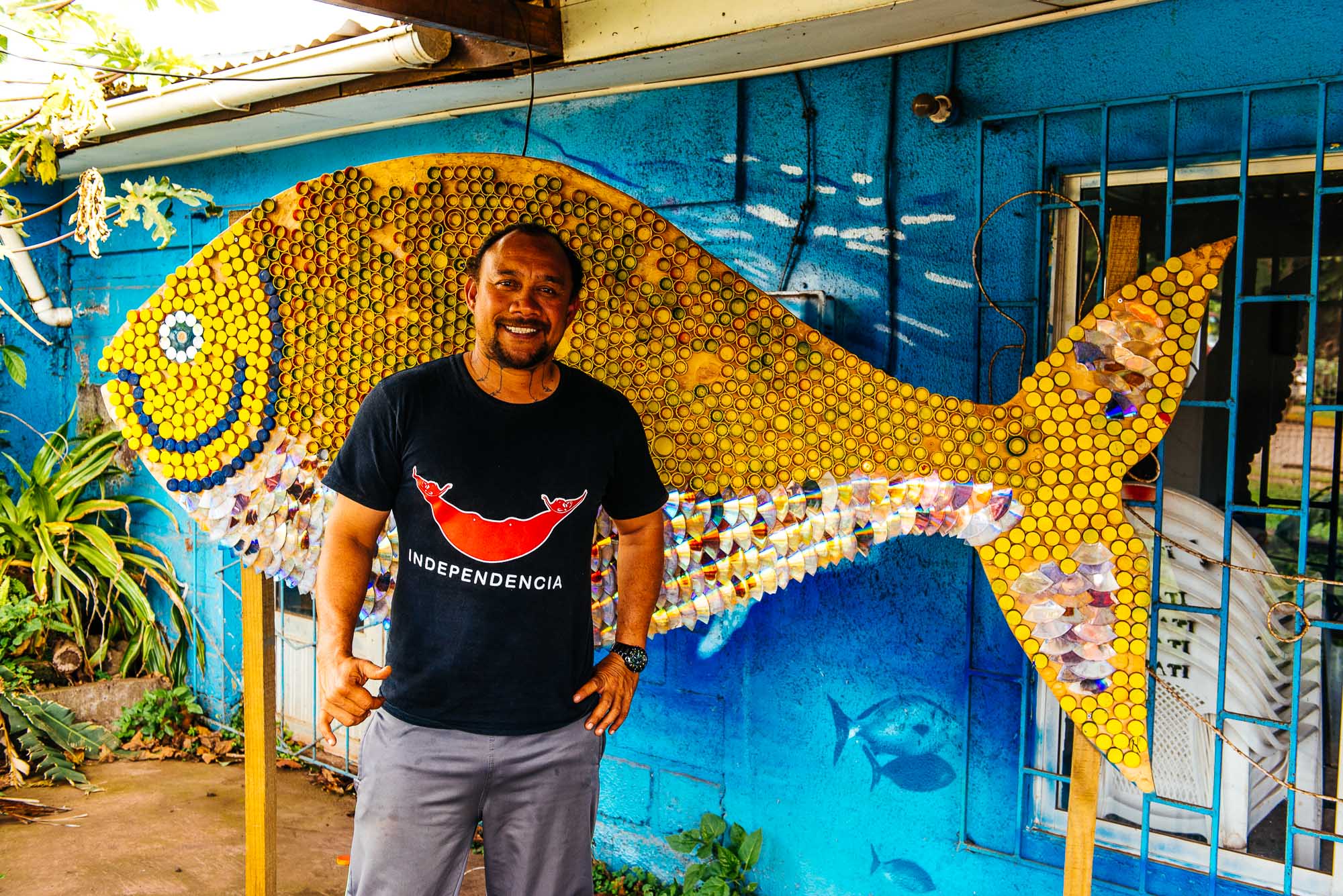Île de Pâques : derrière les Moai, un océan super protégé - Easter Island: Behind the Moai, a Well-Protected Ocean
Ludovic Burns Tuki - Executive director de la mesa del mar
Célèbre et mystérieuse, l’Île de Pâques (Rapa Nui pour respecter le nom local) est mondialement connue pour ses statues monumentales : les Moai. Ces géants, taillés dans la roche des volcans, ne vénèrent plus seulement les ancêtres et les dieux, mais ils “surveillent” désormais la plus grande aire marine protégée d’Amérique latine.
Les îles de Pâques et de Sala y Gómez, distantes de 415km, sont les cimes d’une gigantesque chaîne de montagnes sous-marine, refuge d’une grande biodiversité. Les eaux tropicales sont paradisiaques pour la faune marine. Ce petit bout d’océan pacifique recèle des récifs de corail, dont certaines espèces sont uniques au monde au vu de l’isolement du lieu.
Famous and shrouded in mystery, Easter Island (or Rapa Nui in Polynesian) is known worldwide for its monumental statues, the Moai. These giants, carved out of volcanic rocks, no longer only venerate the ancestors and gods, they also “keep a close watch on” the largest protected marine area in South America.
The Easter and Sala y Gómez islands, separated by 258 miles, are the summits of a gigantic submarine mountain range that shelters vast biodiversity. The tropical waters surrounding them are a haven for marine fauna. In addition, this tiny area in the Pacific Ocean contains coral reefs, some species of which are endemic on account of their isolation.
Pour protéger ces espèces, le Chili et les habitants de Rapa Nui viennent de s’entendre sur la création d’une gigantesque zone protégée de 720.000 km2 autour des deux îles. Une aire marine où l’activité humaine est donc restreinte, voire interdite : plus de pêche industrielle, pas d’activité minière notamment et une taxation spécifique.
La situation de la mer à Rapa Nui est préoccupante : diminution des espèces due à la pêche illégale, contamination des eaux et de la côte sont autant de problèmes auxquels les habitants doivent faire face jour après jour. Sans compter le tourisme en augmentation constante et les changements climatiques. Face à ces dangers, il était temps de réagir. Ludovic Burns Tuki, se bat depuis des mois pour la création de cette « oasis » au milieu de l’océan, avec son association La Mesa del Mar, qui a pour slogan « Te Mau o te Vaikana o Rapa Nui », ce qui signifie : « les richesses de la mer de Rapa Nui ».
To protect these species, Chile and the Rapa Nui inhabitants have agreed to create a huge 278,000-square-mile protected area around the two islands. As a consequence, this is now a marine reserve where human activity is either limited or forbidden: no more mining or industrial fishing, but specific tax rates for small fishing companies.
In Rapa Nui the condition of the sea is worrying: the decrease in the number of species due to illegal fishing and pollution of the waters and coasts are some of the issues being confronted by the locals every single day, without mentioning the impact of the ongoing rise in tourism activity and global climate change. Facing these threats, it was time for the people to act. For months, Ludovic Burns Tuki has been fighting for the creation of this oasis in the middle of the ocean through his association “La Mesa del Mar,” whose slogan is: “Te Mau o te Vaikava o Rapa Nui,” which means: “The Riches of the Sea of Rapa Nui”.
Malgré tout cela, une vague d’oppositions s’est abattue sur les côtes de l’île, rattachée à l’Etat du Chili depuis 1988. Plusieurs habitants, épris d’indépendance, craignent cet accord avec « le continent », de peur qu’une fois de plus, l’Etat (distant de 3700km) décide pour eux.
Despite this initiative, a wave of opposition has hit the coasts of the island, which was annexed to Chile in 1988. Some strongly independent locals are concerned about this agreement made with “the continent”. They fear that the State—situated 2,300 miles away— has decided for them once again.
Cela dit, l’accord entérine une administration conjointe de la zone entre l’état central et le gouvernement de l’île. Cet accord maritime va donc dans le sens d’une plus grande autonomie, tout comme la décision de rendre aux autorités locales la gestion et les bénéfices du Parc National qui recouvre la moitié de l’île !
Plus que jamais, le peuple Rapa Nui a les clés de son petit paradis !
However, this agreement ratifies joint administration of the area between the Chilean state and the island’s government. Consequently, this maritime agreement fosters greater autonomy. The same can be said of the decision to give management of the National Park (which covers half the surface of the island!) and the profits made from it, back to the local authorities.
More than ever, the Rapa Nui people hold the keys to their small piece of heaven!






